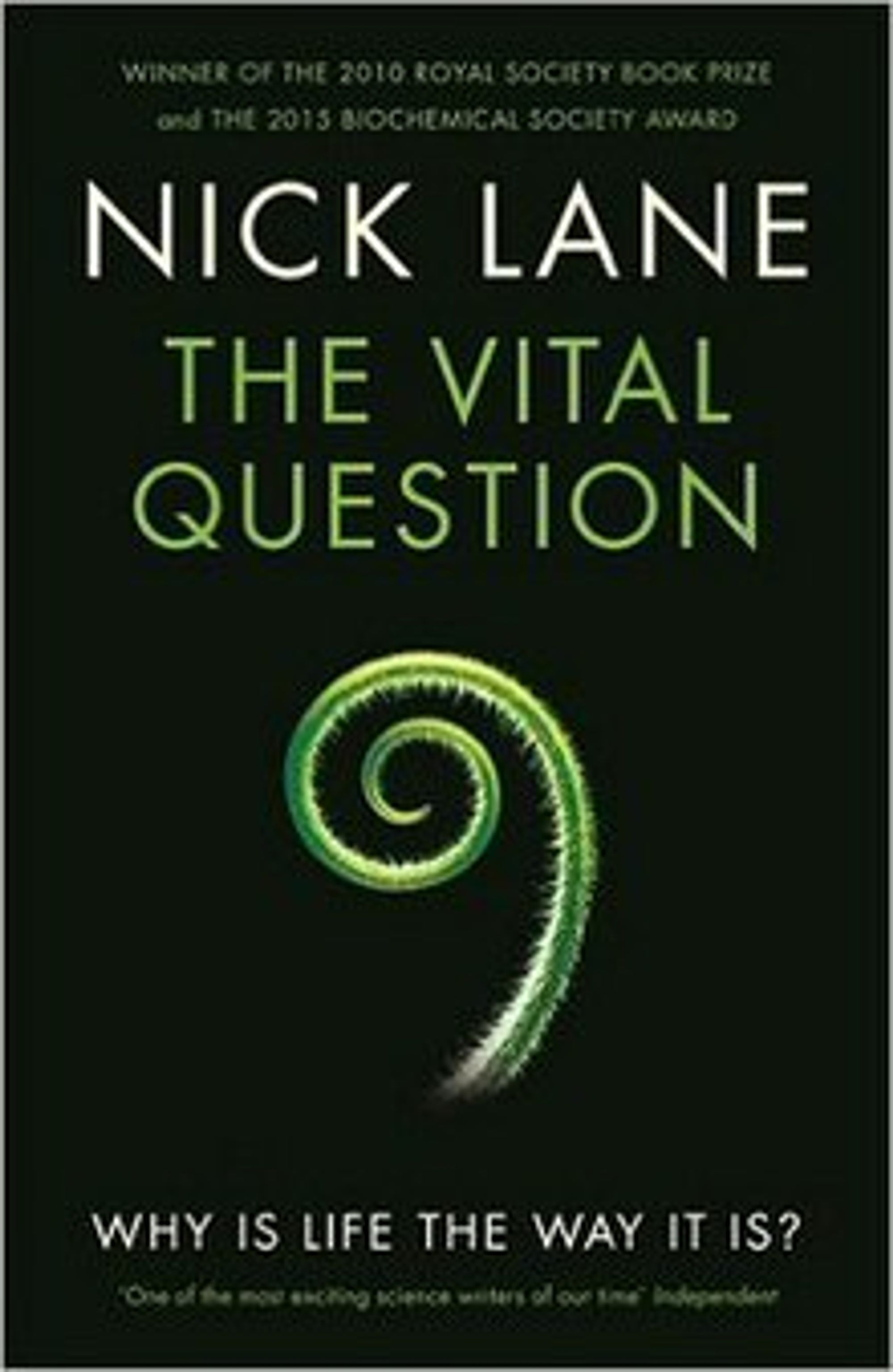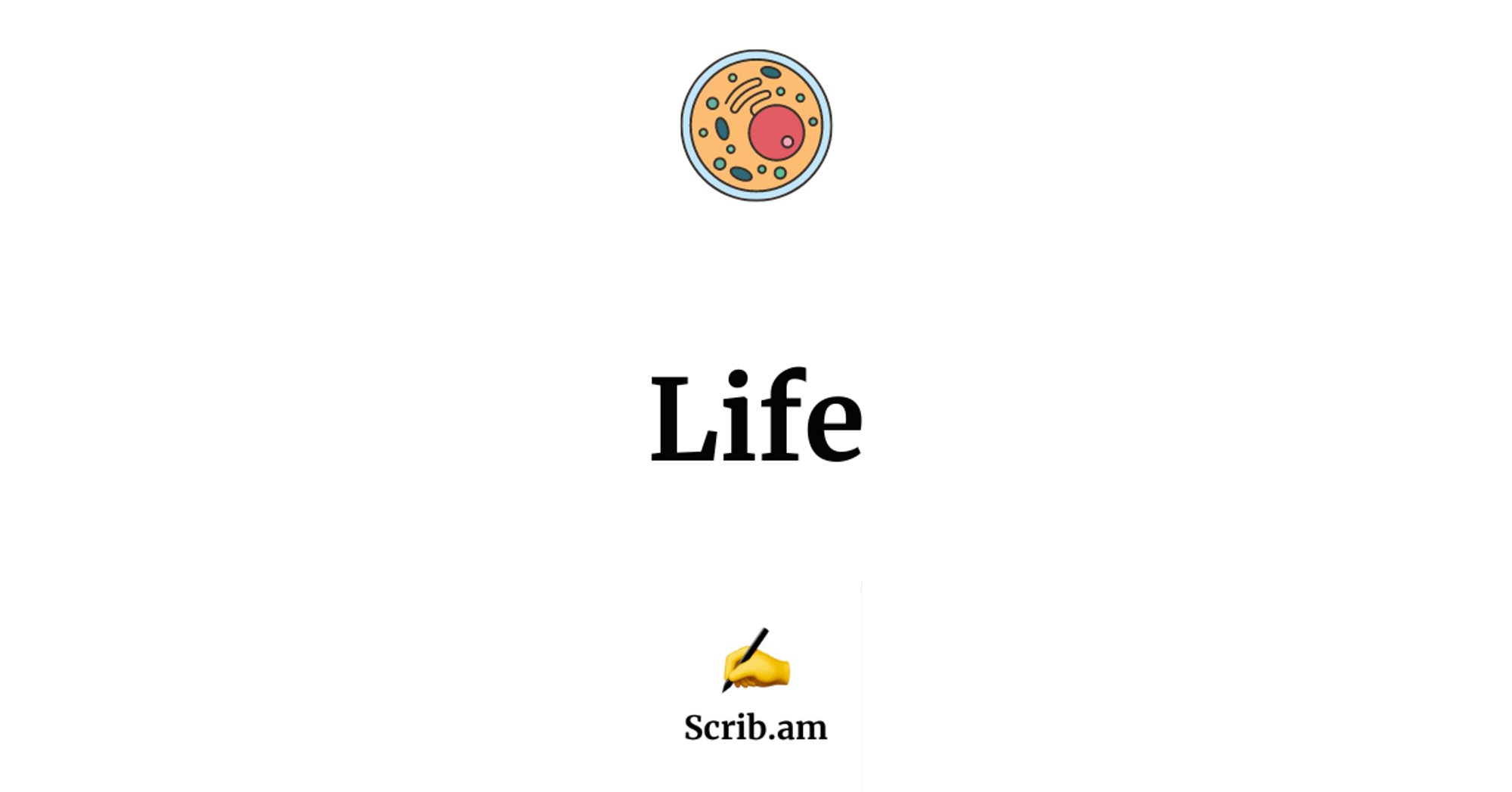I was inspired to write this piece after watching Lee Cronin’s interview with Lex Fridman.
Leroy "Lee" Cronin is the Regius Chair of Chemistry in the School of Chemistry at the University of Glasgow, specialist in the study of the origins of life.
In this interview he argues that coming up with a self-replicating mechanism isn’t be the most difficult part of the life creation process. The very hard problem is the initial step from inorganic to organic.
So far we’ve only been able to facsimile the genome of a living entity (from its DNA) to reproduce it in the lab. It’s not “inventing” life, it’s merely cloning it.
Even today, synthetic biologists cannot make a cell from scratch.
Cronin’s ultimate goal would be to transform Sand into Cell, i.e. find the missing link between inorganic and organic matter. According to him, it’s basically a Search Problem: how can inorganic material, helped by some energy, find its own way to develop into living matter.
Even if he believes that we’re not alone in the universe, Cronin considers that it is our moral obligation to develop “life bombs” which we can fire to dead planets to fertilize them and spread life across the cosmos. We need more life in the universe.
It’s not fantasy or science fiction.
This transmutation happened somewhere in the universe (not necessarily on Earth) a long time ago: non-living matter found a way to generate life.
Here are the 4 potential categories of hypotheses for the Origin of Life according to Encyclopedia Britannica
- Life is a result of a supernatural event—that is, one irretrievably beyond the descriptive powers of physics, chemistry, and other science (it’s the theory promoted by religions and some philosophies).
- Life, particularly simple forms, spontaneously and readily arises from non-living matter.
- Life on Earth is coeternal with matter and has no beginning. Life arrived on Earth at the time of Earth’s origin or shortly thereafter (the Panspermia hypothesis). It doesn’t solve the origin problem though.
- Life arose on the early Earth by a series of progressive chemical reactions.
Spontaneous Generation
The idea that life can spring from inorganic matter isn’t new.
In its first iteration, fully refuted in the mid-1800s, we used to think that worms or maggots spontaneously generated out of putrefying matter. Then we understood that those organisms actually emerged from the eggs laid in the inorganic matter by some parent organism.
Louis Pasteur triumphantly showed that even the most minute creatures came from “germs” that floated downward in the air, but that they could be impeded from access to foodstuffs by suitable filtration.
Source: Encyclopedia Britannica. Interestingly, Pasteur held the religious belief that only the Deity can make life.
Chicken-And-Egg Problem
Although we know that maggots don’t appear by magic out of rotten meat, we still have a chicken-and-egg problem: at the very origin of life, there was no parent organism, no fly to lay an egg.
So, according to the advocates of abiogenesis (like Lee Cronin), life must have emerged from inorganic matter.
How ? We still don’t know, at least not completely.
In the 1920s, British scientist J.B.S. Haldane and Russian biochemist Aleksandr Oparin determined that the emergence of a primordial soup of organic molecules from non-living matter might have been easier in the earliest days of Earth formation, when the atmosphere was much more hydrogen-rich than today.
The first experimental simulation of early Earth conditions dates back to 1953, carried out by Stanley L. Miller, a graduate student at the University of Chicago. He managed to generate amino acids from a gas solution bombarded with an electric discharge, thought to represent lightning flashes.
Proteins, consisting of a chain of amino acids, are the building blocks of cells (along with other biological macromolecules: carbohydrates (incl. sugars), lipids, and nucleic acids (DNA, RNA)).
So this experiment, which proved the possibility of natural organic synthesis, was a first step in explaining the zero to one process (amino acids to proteins (+ carbohydrates + lipids + nucleic acids) to cells (i.e. life)), though not enough yet to claim that life had been created from non-living matter.
The Origin of Food
Later experiments managed to combine monomers (amino acids and other compounds) into polymers, incl. proteins, which might have constituted, if not early self-replicating life, at least a form of early food supply, essential for the development of life through metabolic functions (the chemical processes that take place as your body converts foods and drinks into energy).
Some scientists believe that metabolizing protocells came first, as a stepping-stone to life, whereas others consider that self-replication (lacking metabolic functions) was the primordial feature.
There’s also a debate around the habitat for abiogenesis. Some scientists claim that it all started in deep-sea hydrothermal vents, whereas others declare that life developed deep below Earth’s surface before finding its way to water.
Prokaryotes
Earth is estimated to be 4.54 billion years old.
The first single-cell organisms lacking a nucleus and membrane-bound internal compartments called organelles, called prokaryotes, appeared c. 3.5 billion years ago, roughly 1 billion years after Earth was formed.
Prokaryotes are divided into two distinct groups: the bacteria and the archaea, which scientists believe have unique evolutionary lineages.
At some point, still to be defined, appeared the eukaryotes, organisms whose cells have a nucleus enclosed within a nuclear envelope. Plants, animals and fungi are all composed of these eukaryotic cells.

In terms of their morphological complexity bacteria and archaea have barely changed over 4 billion years; morphologically complex eukaryotes, in contrast, arose from a singular endosymbiosis (a symbiotic relationship where one organism lives inside the other) between two prokaryotes around 1.5 to 2 billion years ago.
According to Nick Lane, Professor of Evolutionary Biochemistry at UCL - London, a handful of catastrophic periods might have accelerated the expansion of eukaryotes :
About 2.3 billion years ago and around 700 million years ago. This is when the entire planet froze over, the geologists tell us, right down to sea level on the equator. Catastrophic global changes are undoubtedly bottlenecks that could affect tremendously the whole trajectory of life. Another one, the Great Oxidation Event when we first start to see oxygen in the atmosphere, again from about 2.2–2.3 billion years ago. These are global catastrophes and it is very easy to imagine that after this catastrophe, just as the mammals expanded after the dinosaurs, the eukaryotic cells expanded.
Source (for both previous quotes): Origin of the Eukaryotic Cell, Nick Lane.
Many eukaryotes are unicellular organisms. The simplest eukaryotes are the yeasts.
Multicellular organisms evolved from unicellular eukaryotes at least 1.7 billion years ago.
Since Earth has at least 1.5 billion years left to support life, we could argue that multicellular life on Earth has reached its middle-age phase. It’s a perfect time to reflect upon its origin and prepare for a bright future, which must involve a lifesaving expansion to other star systems. It’s the only way for us to escape the death of our middle-aged Sun, when it will run out of hydrogen, in about 5 billion years.

